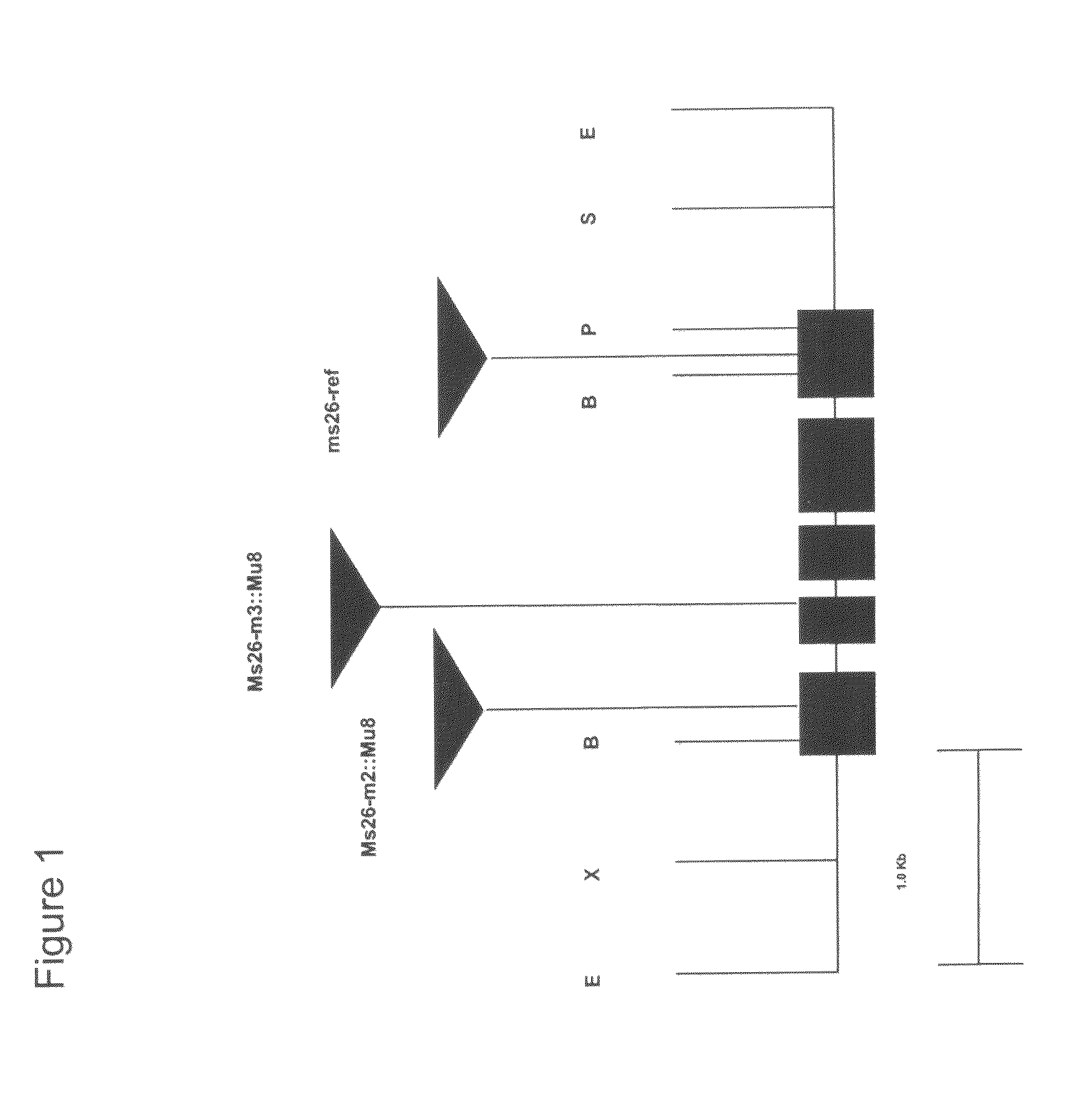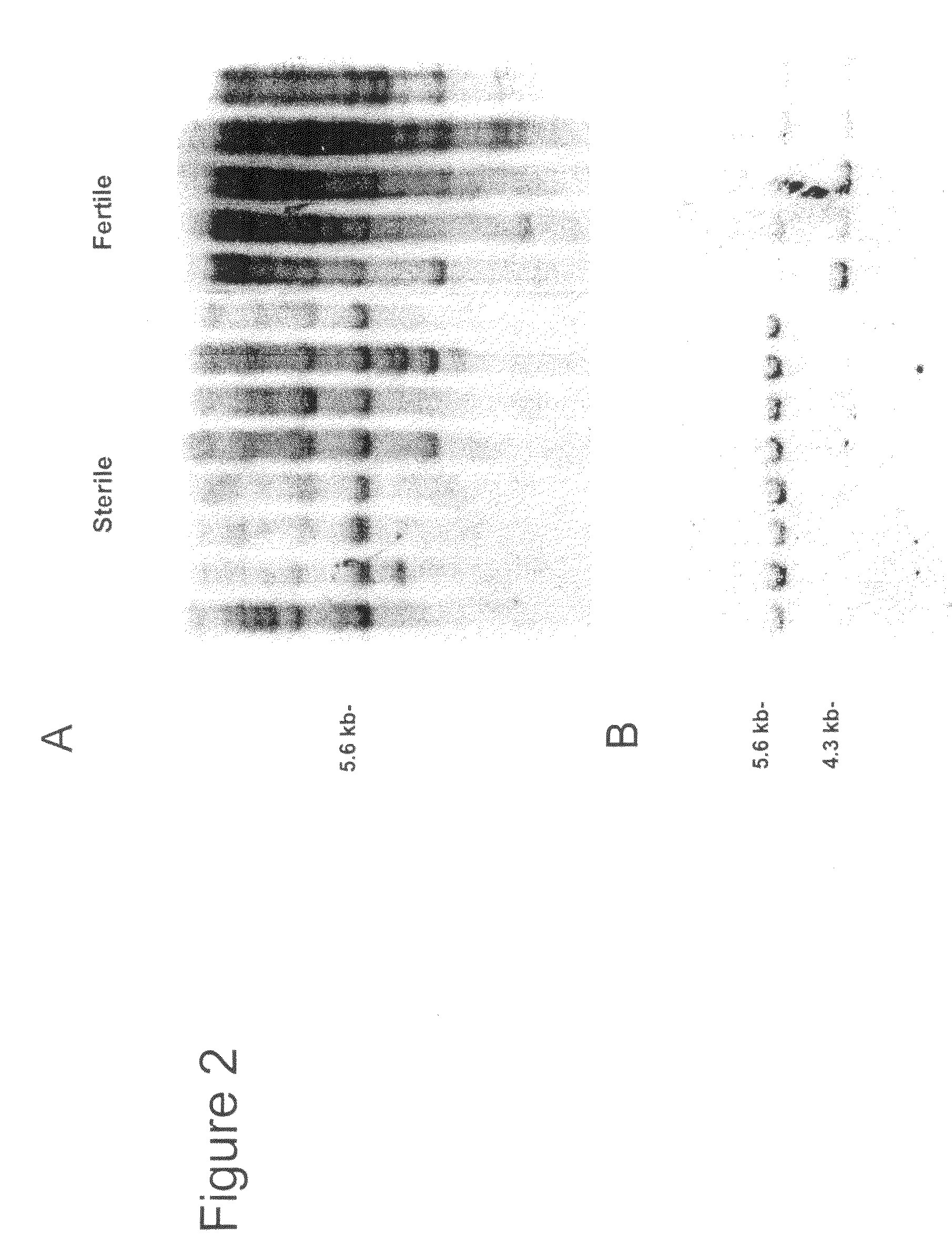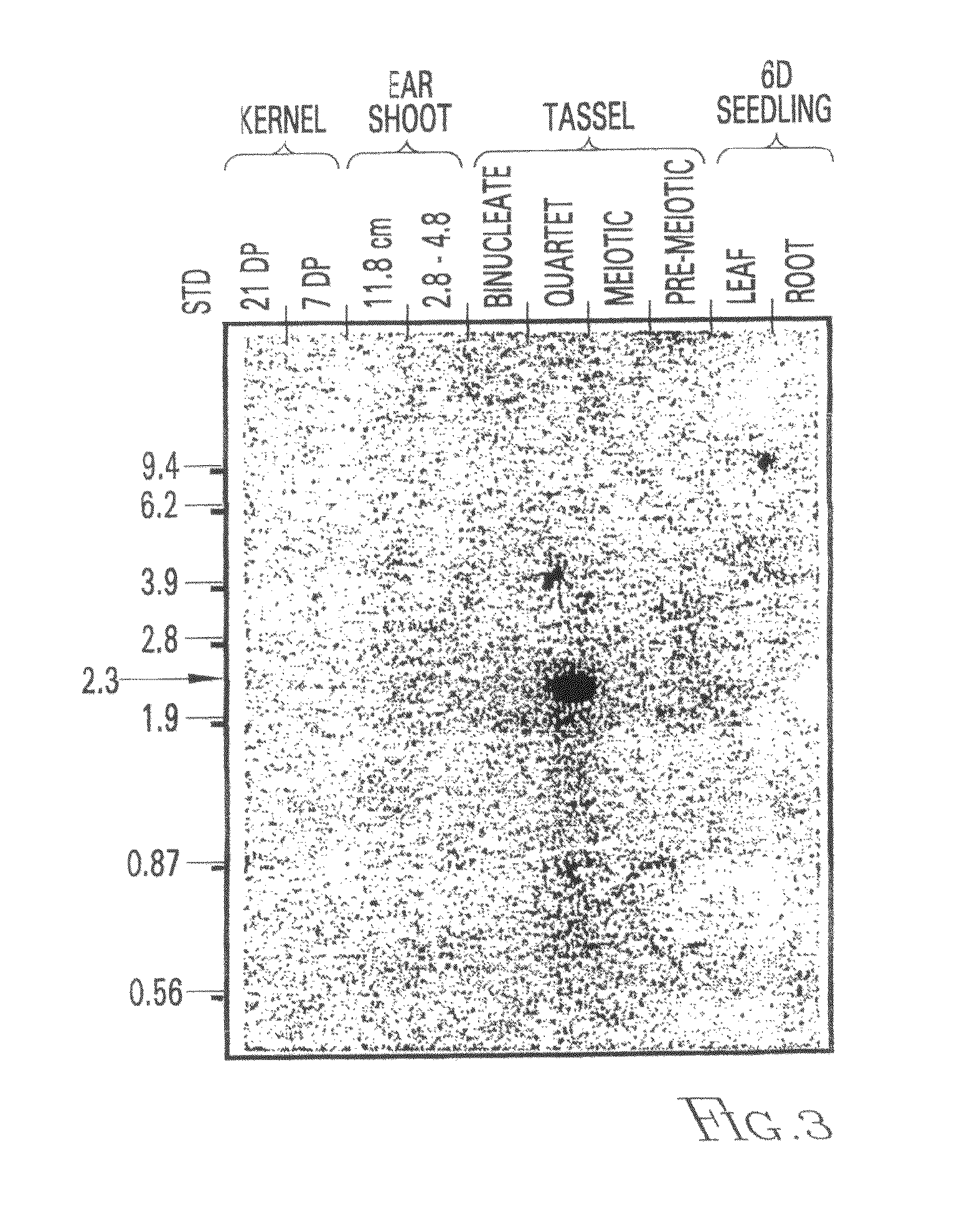Nucleotide seqeunces mediating male fertility and method of using same
a technology of nucleotide seqeunces and male fertility, which is applied in the field of nucleotide seqeunces mediating male fertility and using same, can solve the problems of causing more damage to plants by detasselers, and reducing the efficiency of detasselers
- Summary
- Abstract
- Description
- Claims
- Application Information
AI Technical Summary
Benefits of technology
Problems solved by technology
Method used
Image
Examples
example 2
Library Construction, Screening, and Mapping
[0131]The process of genomic library screenings is commonly known among those skilled in the art and is described at Sambrook, J., Fritsch, E. F., Maniatis T., et al., Molecular Cloning: A Laboratory Manual, Cold Spring Harbor Laboratory, Cold Spring Harbor Lab Press, Plainview, N.Y. (1989). Libraries were created as follows.
[0132]DNA from a sterile plant was digested with EcoRI and run on a preparative gel. DNA with a molecular weight between 5.0 and 6.0 Kb was excised from the gel, electroeluted and ethanol precipitated. This DNA was ligated into the Lambda Zap vector (Stratagene™) using the manufacturer's protocol. The ligated DNA was packaged into phage particles using Gigapack Gold (Stratagene™). Approximately 500,000 PFU were plated and lifted onto nitrocellulose membranes. Membranes were hybridized with the Mu8 probe. A pure clone was obtained after 3 rounds of screening. The insert was excised from the phage as a plasmid and design...
example 3
Identification and Cloning of Additional ms26 Alleles
[0134]An additional Mu insertion mutations in Ms26 was identified by using a polymerase chain reaction (PCR) primer for Mu and a gene specific primer for Ms26 and screening a population of Mu F1 families. Sequence analyses of the PCR products showed that all three Mu insertions occurred in the second exon (FIG. 1). The F2 seeds from one of these families were grown and examined for male fertility / sterility. Southern blot analyses of this family confirmed the cosegregation of the Mu insertion in Ms26 with the male-sterile phenotype and the allele was designated ms26-m3::Mu.
[0135]The ms26 allele described in Loukides et al., (1995) Amer. J. Bot 82, 1017-1023 and designated ms26-ref was also investigated. To analyze the mutation in ms26-ref, Ms26 genomic sequences were cloned from ms26-ref sterile and fertile plants. Ms26 was cloned as a ˜4.2 kb EcoRI fragment and ms26-ref cloned as a ˜6 kb HindIII fragment and an overlapping ˜2.3 kb...
example 4
Expression Analysis and cDNA Isolation
[0136]Northern analysis can be used to detect expression of genes characteristic of anther development at various states of microsporogenesis. Northern analysis is also a commonly used technique known to those skilled in the art and is similar to Southern analysis except that mRNA rather than DNA is isolated and placed on the gel. The RNA is then hybridzed with the labeled probe. Potter, E., et al., “Thyrotrotropin Releasing Hormone Exerts Rapid Nuclear Effects to Increase Production of the Primary Prolactin in RNA Transcript,”Proc. Nat. Acad. Sci. USA 78:6662-6666 (1981), Lechelt, et al., “Isolation & Molecular Analysis of the Plows,”Mol. Gen. Genet. 219:225-234 (1989). The PstI fragment from the SBMu200-3.1 clone was used to probe a Northern blot containing kernel, immature ear, seedling and tassel RNA. A signal was seen only in tassel RNA at approximately the quartet stage of microsporogenesis, as reflected in FIG. 3. The transcript is about ...
PUM
| Property | Measurement | Unit |
|---|---|---|
| Tm | aaaaa | aaaaa |
| resistance | aaaaa | aaaaa |
| heat | aaaaa | aaaaa |
Abstract
Description
Claims
Application Information
 Login to View More
Login to View More - R&D
- Intellectual Property
- Life Sciences
- Materials
- Tech Scout
- Unparalleled Data Quality
- Higher Quality Content
- 60% Fewer Hallucinations
Browse by: Latest US Patents, China's latest patents, Technical Efficacy Thesaurus, Application Domain, Technology Topic, Popular Technical Reports.
© 2025 PatSnap. All rights reserved.Legal|Privacy policy|Modern Slavery Act Transparency Statement|Sitemap|About US| Contact US: help@patsnap.com



